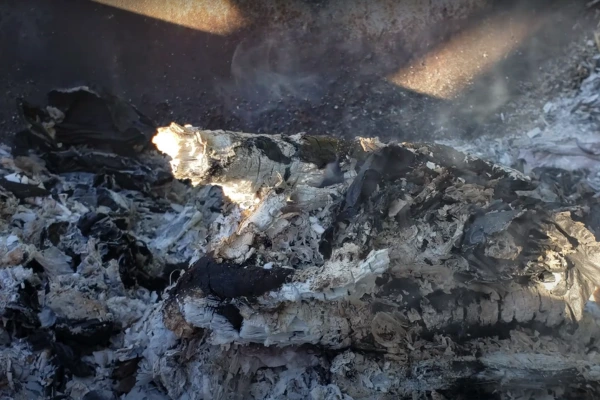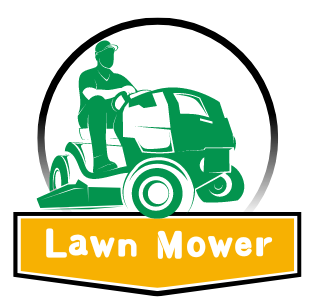There’s something rewarding about cozying up to a warm fire on a cold December day, knowing that the wood you’re burning will soon turn into something incredibly valuable: wood ash.
What most people don’t realize is that wood ash has been a garden secret for centuries. It offers an array of benefits for lawns and gardens, providing essential nutrients and improving soil quality.
But before you grab a bucket of ash and start spreading it over your lawn, you need to understand How to Spread Wood Ash on Lawn properly.
In this guide, we’ll cover everything you need to know about How to Spread Wood Ash on Lawn, from its benefits to step-by-step instructions on proper application.
If you’re looking for more ways to naturally boost your lawn’s health, you might also want to check out What is the Best Homemade DIY Lawn Fertilizer? for additional homemade fertilizer ideas.
What is Wood Ash and Why is It Beneficial for Your Lawn?

Wood ash, often referred to as potash, is the residue left after burning wood. It contains several nutrients essential for plant growth and soil health, making it a valuable resource for your lawn.
Key Components of Wood Ash
Calcium Carbonate (Lime) – Primarily responsible for raising soil pH, making it less acidic.
Potassium (Potash) – Essential for root development, drought resistance, and photosynthesis.
Trace Elements – Magnesium, phosphorus, and other minor nutrients that contribute to overall plant health.
Benefits of Wood Ash for Lawns
Neutralizes Acidic Soil: Perfect for lawns with acidic soil, as the ash helps raise the pH to a more neutral level.
Nutrient Enrichment: Supplies calcium and potassium, two key nutrients that lawns need for strong growth and resilience.
Improves Soil Structure: Wood ash helps to break up heavy, compacted soils, improving drainage and aeration.
Step-by-Step Guide: How to Spread Wood Ash on Lawn

Step 1: Prepare Your Gear
Since wood ash can be caustic, wear protective gear like gloves and a mask to avoid inhaling or touching it.
Step 2: Spread the Ash Evenly
Using a garden spreader or by hand, evenly distribute the ash across your lawn. Pay extra attention to bare spots or areas where grass is struggling, as they may benefit the most from the nutrients.
💡Pro Tip: If you’re spreading by hand, make sure to toss the ash lightly to avoid clumping. You want a nice, even layer that can dissolve easily with water.
Step 3: Water the Lawn
After spreading the ash, give your lawn a good watering. This helps to settle the ash into the soil and start breaking down its nutrients. If you’re applying in fall or winter, natural rainfall and snow will do most of the work for you.
Alternative Methods to Use Wood Ash in Lawn Care
Besides spreading wood ash directly on your lawn, there are other ways to use it effectively in garden care.
Adding to Compost
One of the easiest ways to use wood ash is to add it to your compost pile. Because ash is highly soluble, you can simply toss it on top, and it will gradually integrate into the compost as it breaks down.
Top Dressing
For a quick nutrient boost, consider top-dressing your lawn. Spread a thin layer of wood ash directly on the soil surface, even on top of mulch. Natural elements like rain will help break it down and distribute the nutrients.
Avoid These Common Mistakes When Spreading Wood Ash
While wood ash can be incredibly beneficial, there are some mistakes you’ll want to avoid:
Over-application: Applying too much ash can drastically raise the soil pH, making it too alkaline for grass to thrive. Stick to recommended amounts.
Spreading on Alkaline Soils: If your lawn’s soil is already neutral or alkaline, adding wood ash can push the pH too high, leading to poor grass growth and nutrient imbalances.
Using Ash on Acid-Loving Plants: Avoid applying wood ash near plants like blueberries, azaleas, and rhododendrons, as they prefer acidic soil.
How Wood Ash Impacts Lawn Fertility
The key benefit of wood ash is its ability to neutralize acidic soils and supply essential nutrients. Here’s how it impacts your lawn:
Calcium: Strengthens cell walls, ensuring robust grass that can withstand stress and diseases.
Potassium: Enhances root development, improves drought resistance, and supports photosynthesis.
Trace Elements: Provides magnesium and phosphorus, which are necessary for healthy plant growth.
Is Wood Ash Safe for All Lawns?
Ideal Lawn Types
Wood ash is particularly beneficial for lawns that grow in acidic soils, such as those containing fescue or ryegrass.
When to Avoid Wood Ash
If your soil is already neutral or alkaline, using wood ash can backfire, causing nutrient lockout and poor grass health. Avoid using wood ash if you have grass species like Bermuda or Zoysia, which prefer more acidic soils.
Long-Term Care After Applying Wood Ash
After spreading wood ash on your lawn, it’s important to monitor your soil’s health and make adjustments as needed.
Retest Soil pH: After 6-12 months, retest your soil’s pH to ensure it remains balanced.
Use Balanced Fertilizers: Combine wood ash with nitrogen-rich fertilizers for balanced lawn nutrition.
Ongoing Lawn Maintenance Tips
Keep up with regular watering, as it helps break down ash and integrate it into the soil.
Consider mulching and aerating to improve soil structure and allow nutrients to reach deeper levels.
Conclusion
Wood ash is a cost-effective, natural solution for improving your lawn’s health. By using it to neutralize acidic soil, boost essential nutrients, and enhance soil structure, you’ll help your lawn grow stronger, greener, and healthier. So next time you’re enjoying a fire, think twice before tossing that ash—it could be your lawn’s new best friend!
FAQs
How often should I spread wood ash on my lawn?
You should apply wood ash once or twice a year, depending on soil pH and lawn needs.
Can wood ash replace lime or fertilizers?
Wood ash can supplement lime, but it doesn’t fully replace commercial fertilizers. Combine it with other soil amendments for best results.
Is wood ash harmful to pets or wildlife?
If applied properly and watered in, wood ash poses little risk to pets or wildlife. Just avoid leaving it in large piles where animals might come into contact with it.

